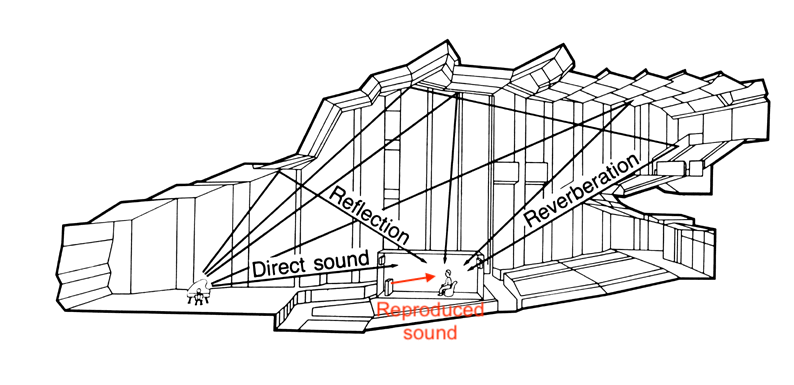Re: what I quoted from Linkwitz earlier. Paraphrase, our hearing systems are extremely good at locating the 3D position of sound sources in the presence of other objects (e.g. the ground, walls etc.)
Putting speakers in a room, our aim is to fool the brain exactly in the area it's phenomenally good at. We DON'T want our brains to locate the real sound source(s) at all. We want the brain to perceive phantom sound sources.
Linkwitz argued that it's possible to achieve it in a room, by working with reflected sound, rather than against it, and having an even frequency response at every angle off-axis. Then the brain stops perceiving the speakers and even the surfaces in the room, thereby revealing the recording.
If you're saying the perception of the original acoustic will be distorted, degraded and reduced with a non-binaural/HRTF set up, I agree. However, you're saying no height information can be encoded at all because there are just two sound sources, which I think is a misunderstanding, since binaural can encode 3D volumes with two sound sources. What you're really arguing about is the absolute necessity of HRTF/pinnae processing so without this being handled, 3D information is completely absent - and I don't see that as necessarily and absolutely true. I don't see why some information can't be present (I've repeatedly said that it might not be technically accurate, just that something is present).
Darren
Yes I am arguing that without some sort of HRTF pinnae processing an ordinary stereo mic set up cannot encode height information (which is not the same as whether it can record the sound of things coming from the top; it's how it
differentiates them from things
not coming from the top). [Let's not confuse this with "3D" which is an ambiguous expression (see below)]. I honestly believe this to be the orthodox view but woud be interested to hear otherwise how height (angle of incidence) information is encoded in practice, if it is.
[I wish i had stopped here, but I feel obliged to show my working.]
What this comes down to is that as I understad it in the real worlld you detect/decode height information (ie information as to the angle from which sound comes) using pinna/head spectral cues and by head moving (and of course using non aural cues) not by interaural time and amplitude differences. If I have missed some other auditory information as to the angle of incidence of sound then what is it? ie what is the "height information". There is no equivalence between sterophonic hearing and stereoscopic vision. You don't get the equivalent of an image in a particular locaiton (mapping to external spatial location) on your retina.This is crucial.
Without those spectral cues being encoded into the signal you don't get the height information (AKA "comes from above your head" information). This is presumably why we don;t hear the orchestra coming from below the speakers or get a sense of looking down at the orchestra.
And even if the spectral information were encoded and replayed by stero speakers, it would then be confused by the fact that the sound was coming from the front and will all be impressed wiht your head's "sound in front" spectral imprint, so it will only work with headphones. The other way to do it is to actually encode separate "above" channel info (no spectral cues required) and send it to your head from the right direction. Your head then supplies the comes "from the top" spectral imprint. The fact that reflections from the ceiling will be recorded does not tell you how it is encoded specfically as being refections from roof not reflections from the wall. That is the nub of the matter, as is perfectly clear if one starts from the question of how we perceive height information.
The fact that your brain may create/interpolate/guess/imagine that some sound comes from above or below sometimes does not mean that height information is encoded. If you imagine a room you tend to imagine one which has some sort of height dimension. If you imagine a violin you tend to imagine one which has some sort of size. It would be surprising if your brain did
not fill in some information.
And while we are on it. I have not notificed (on an admitedly quick reading) anyhting in the linkwitz article on height information as such. I think you are reading far too much into his use of the expression "3D" in one sentence. Can you point me to any passage in which he refers to the encoding of height informaiton explictly?
I have not noticed anything on the net about how to encode/ master in height information in stereo (there's
plenty on l-R panning and depth). If it can be done I would be interested to read it.
If anytone thinks this is just theorectical then I'm all ears about how sound engineers set out to record (so as to be diffentiated by listeners) instruments at different heights in the sound field or even better vertical panning. I have noticed that in terms of left right panning some panning software does use some sort of left /right spectral processing as well as time and amplitude differences. Doies such a vertical panning device exist for stereo?



